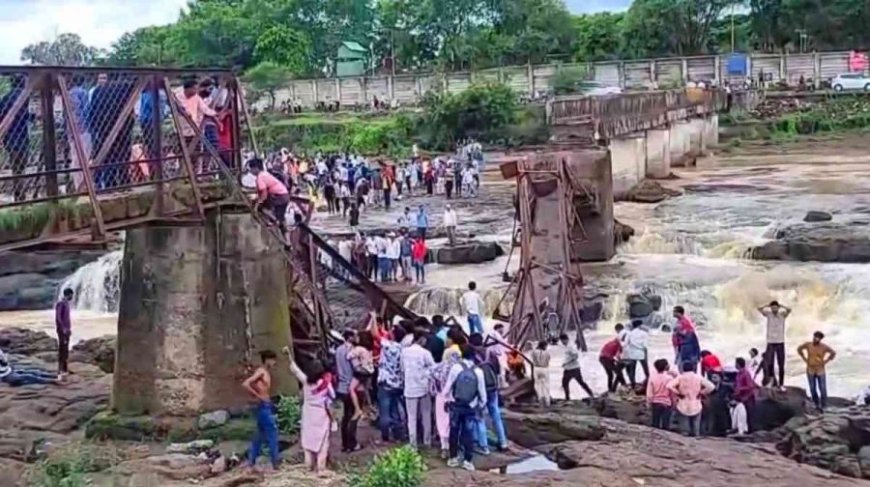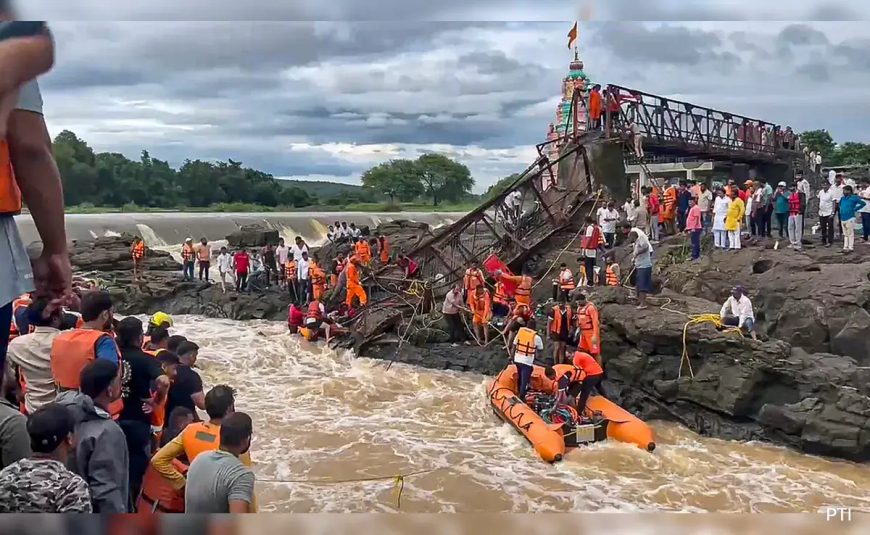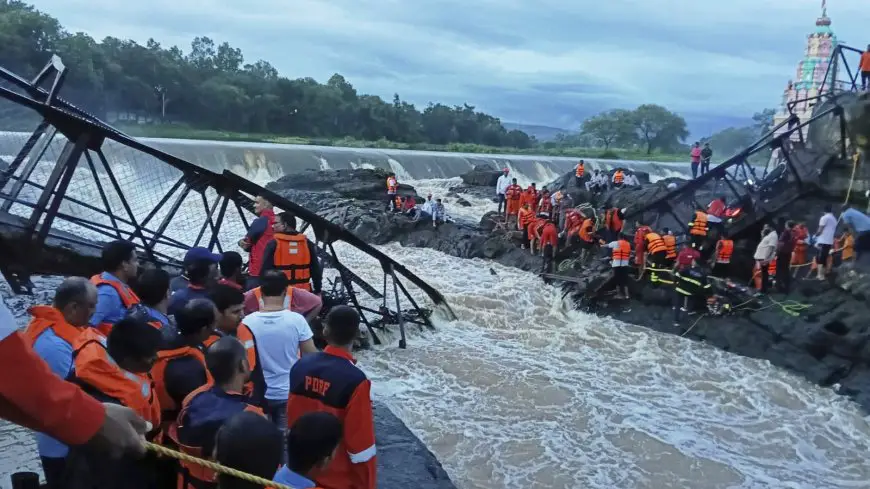Pune Bridge Collapse Tragedy: How Negligence and Overcrowding Led to a Fatal Disaster
A detailed update on the tragic Pune bridge collapse in Kundamala, revealing causes, casualties, and the failure of safety protocols. Includes rescue outcomes and government response.
Overview
On the afternoon of Sunday, June 15, 2025, a footbridge over the Indrayani River near Kundamala, in Pune’s Maval tehsil, collapsed under the weight of an overcrowded holiday crowd. The bridge, which was intended only for pedestrians, gave way as hundreds gathered for weekend sightseeing amid monsoon season rains. The collapse resulted in the confirmed deaths of four individuals, including a child, and left dozens injured, some critically. This tragedy has reignited urgent discussions around infrastructure safety, enforcement, and public awareness.
What Happened?
At around 3:30 PM, the decades-old bridge crumbled as over a hundred people crowded onto its narrow 4-foot-wide span. Many were tourists visiting the picturesque Kundmala area, especially popular during monsoons for its lush views of the river. Some were also seen riding motorcycles or standing on the railings—actions explicitly forbidden by visible signage placed by the local administration.
The bridge was not built to withstand such numbers. Originally constructed over 30 years ago as a pedestrian-only iron structure, it had rusted with time and lacked proper maintenance. Despite signs prohibiting vehicular use and police warnings against overcrowding, enforcement was lax. According to eyewitnesses, people were packed shoulder-to-shoulder, some stopping to take selfies, oblivious to the strain being put on the structure.
Moments later, a loud creak was heard before the metal gave way and scores of people fell into the swollen Indrayani River, which had been rising rapidly due to ongoing monsoon rainfall.
Casualties and Injuries
Rescue teams, including the National Disaster Response Force (NDRF), Pune Fire Department, and local police, responded within an hour of the incident. Boats and divers worked into the night, rescuing survivors and recovering bodies from the river. After a 15-hour rescue operation, authorities confirmed:
-
4 deaths, including a father and his six-year-old son.
-
Over 50 injured, of which 6 remain in critical condition.
-
All people reported missing were accounted for by the end of the rescue mission.
The victims were taken to YCM Hospital in Pimpri-Chinchwad and the Sasoon General Hospital in Pune.

How Did It Happen?
1. Structural Decay
The bridge had not undergone a formal structural audit in more than a decade. Local gram panchayat members had previously raised concerns about corrosion and unstable supports, especially during monsoon months. Despite this, no significant repairs or upgrades were initiated. A ₹15 lakh repair budget had been sanctioned in 2023, but the tendering process was delayed.
2. Overcrowding and Unauthorized Use
On the day of the collapse, over 100 people were present on the bridge—many of them with motorcycles and scooters, which added significant weight. The structure was never designed for such load-bearing. Officials say that a single police constable had been assigned to monitor the area, which was clearly insufficient given the crowd volume.
3. Neglected Warnings
Numerous signs at the site warned against motorized vehicles and excessive crowding. Villagers also stated that they had pleaded with local authorities during previous festivals to restrict entry during peak hours. However, with no barricades or monitoring systems, these warnings went largely unheeded.
Government Response
Maharashtra Chief Minister Devendra Fadnavis held a press conference expressing deep regret over the incident and announced the following:
-
Ex-gratia compensation of ₹5 lakh for the families of the deceased.
-
Free medical treatment for all those injured in the collapse.
-
An immediate structural audit of all footbridges and suspension bridges in Pune district.
-
A judicial inquiry into the incident, focusing on administrative lapses and mismanagement of public infrastructure.
Union Home Minister Amit Shah and Prime Minister Narendra Modi also conveyed condolences and offered full central government support in the ongoing investigation.
Public Outcry and Local Sentiment
The incident has sparked widespread anger and mourning across Pune and Maharashtra. Locals in Maval expressed frustration that their repeated appeals for maintenance and restrictions had fallen on deaf ears. Civic groups have called for:
-
Accountability of local officials who failed to act on repair requests.
-
Installation of digital monitoring systems and surveillance at major footbridges.
-
Restriction of tourist access during monsoon months in vulnerable areas.
One survivor, 32-year-old Sangeeta Patil, described the moment of collapse: “I was holding my daughter’s hand when we heard a sound like something tearing. In seconds, we were in the water. It was chaos—people screaming, holding on to each other, trying not to be swept away.”
Historical Context: Not the First Time
This collapse adds to a worrying pattern of bridge failures in India. In October 2022, the collapse of a suspension bridge in Morbi, Gujarat, claimed 132 lives, also due to overcapacity and neglected maintenance. A 2018 railway bridge collapse in Mumbai killed one and injured over 20. These incidents point to a systemic problem—aging infrastructure, poor audits, and lack of crowd regulation.
What Happens Next?
As the investigation continues, early findings point to criminal negligence, possibly leading to charges against officials and contractors responsible for the bridge’s upkeep. The Collectorate has already begun issuing notices to the gram panchayat and public works department (PWD) engineers involved in past repair decisions.
Simultaneously, engineers have begun inspection of other vulnerable bridges across the Pune rural region. New proposals include real-time crowd sensors, drone surveillance, and seasonal closures of high-risk zones during peak rains.
Final Thoughts
This tragedy was not an accident—it was a failure of systems, of warnings ignored, and of responsibilities evaded. Four lives were lost that could have been saved with proactive governance and public discipline. As Pune mourns, the rest of the country must take note: bridges are more than infrastructure; they are lifelines. When they fall, it's not just iron and bolts that collapse—it’s trust.
















